Batting
Recent Activity
last year
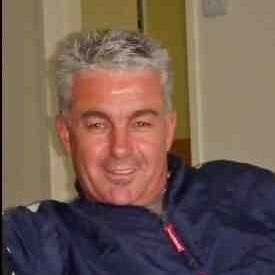

Unlock Your True Potential with Neuro Batting! 🏏

Andre Burger
Cricket Coach
Brisbane, Queensland, Australia
8 Likes
0 Followers
0 Followers

Unlock Your True Potential with Neuro Batting! 🏏
Over the next 8 weeks we will explore the Neuro Batting Principles and fundamentals. Our academy players have been using it for a number of weeks and I am very impressed with not only their progress but also their commitment to this concept.
1️⃣ Neuroplasticity Training: Ever imagined reshaping your brain to master those tricky shots? Neuroplasticity makes it possible! Through targeted practice, we're not just improving; we're evolving.
2️⃣ Cognitive Skills Development: Think fast, play fast! Enhancing your cognitive abilities means sharper decision-making and unparalleled focus when it matters most.
3️⃣ Stress Management: Pressure? What pressure? Learn to stay cool and collected in the hottest moments, turning stress into your secret weapon.
4️⃣ Motor Skill Optimization: It's all about moving smarter. Fine-tune your batting to perfection with the latest in motor skill science.
5️⃣ Visualization & Mental Rehearsal: See it, believe it, achieve it! Use the power of your mind to prepare for every delivery, building confidence and skill even off the field.
Fundamentals at the Core: Wrapped around these principles are the unshakeable fundamentals of batting - technique, physical conditioning, tactical awareness and mental toughness. Master these, and you're not just playing cricket; you're redefining it.
Every swing you take, every run you make, neuro batting is shaping you into the cricketer of tomorrow. Ready to transform your game? We will share this journey with you!
Andre Burger Cricket - https://www.andreburgercricket.com/
Read More
last year


THE V Precision Challenge No.3 Top hand drill.

The V Limited
Cricket Coach
Auckland, New Zealand
1 Likes
5 Followers
5 Followers

THE V Precision Challenge No.3 Top hand drill.
The introduction of zone markers to THE V net has created target zones for precision training.
We have designed a series of targeted 9 shot drills
By focusing on specific shot selections and target zones batters will develop a comprehensive skill set.
The unique V net design generates a repeating absorb deflect return action during use. This allows for continuous shot play and quality repetitions fast tracking key batting skills including rhythm, timing and strike power.
Repetition is the key when it comes to learning. THE V creates a unique immersive training environment that is inherently linked to cognitive motor learning.
Read More
Partner Sponsors
last year

Looking for some advice.

Justin Brooker
Student
Newcastle, New South Wales, Australia
5 Likes
1 Followers
1 Followers
Looking for some advice.
In one day cricket predominantly and against the spinners I’ve been having trouble beating the box fielder at mid wicket. I’ve not been timing being the ball well enough to get passed them or when I use my feet I’m struggling to get to the pitch of the ball and can’t generate any power in the shot.
Any tips on how to improve the shit because I see the good players do it so well and limit the number of dot balls.
Read More
Partner Sponsors
last year

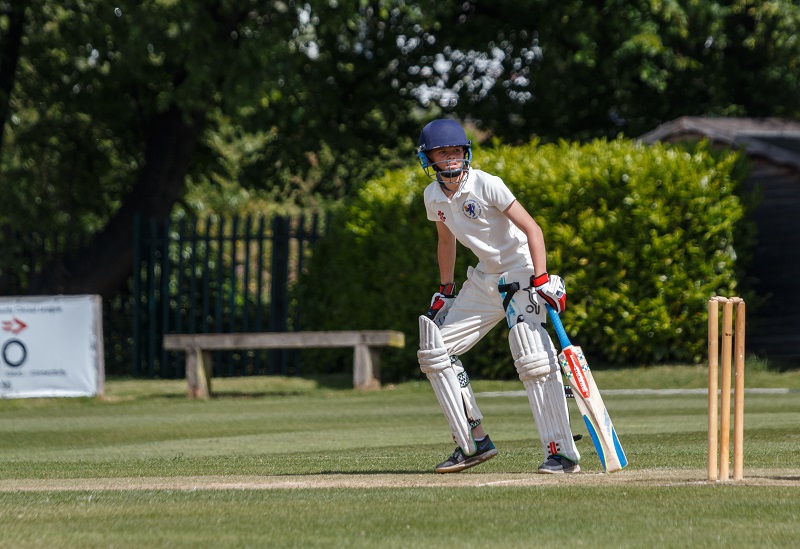
A pre-season letter to a young batter

Peter Procopis
Sunshine Coast, Queensland, Australia
27 Likes
5 Followers
5 Followers

A pre-season letter to a young batter
Season’s greetings young willow wielder,
I imagine you’ve begun some early preparations for Season 2023/24. You may have had a couple of hits with your mates; Club training is now morphing from fitness to nets; and you may even have had your first fielding session- usually quite a shock for those phalanges and their soft tissue surrounds.
No doubt there are a few things that will occur over the next month as the countdown continues. In no particular order you can expect to experience the following:
1. There’ll be a bunch of new players at the Club’s pre-season sessions. This will typically excite coaching staff and selectors who are, of course, vulnerable to the all-too-human bias towards the new and novel over the old and familiar. This will be compounded if the newcomers demonstrate ball machine prowess and net mastery. Of course, as sure as night follows day, some will turn out to be performers in the middle; others will not.
https://www.cricconnect.com/profile/946/peter-procopis/blog/1401/a-pre-season-letter-to-a-young-batter
Read More
last year

What’s the best way to determine the right cricket bat for my son. He is 16 and plays junior reps senior club cricket.

Damian Fenech
3 Likes
0 Followers
0 Followers
What’s the best way to determine the right cricket bat for my son. He is 16 and plays junior reps senior club cricket.
He’s around 165cm and probably due for a growth spurt in the next 18 months.
Also, a friend mentioned due to his height should we look to get a bat with a sweet spot towards the lower end of the bat. Is that correct?
Read More
Partner Sponsors
last year


Campbell Kean
3 Likes
0 Followers
0 Followers
I’m a 16 year old opening batter who played their first season of grade last year. I found it tough to get starts and struggled batting in the afternoon of 2 day matches. Something I struggled with was maintaining focus for my innings and losing concentration when I got comfortable. Could I get some advice on how to maintain focus and get a routine to make sure I’m concentrating
Read More
last year

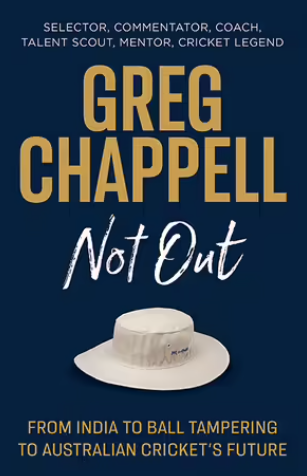
In the chapter "On Batting" Chappell details how at a time when he was still coaching in state cricket (South Australia) and before the internet, he spent "several days in Melbourne, locked in a hotel room with Ian Frazer and Swan Richards watching hours of footage of all the top players. These included Sobers, Lara, Gilchrist, Chanderpaul and more to unlock the human movement elements within these players.

Andrew Walton
Cricket Coach
Clifton Hill, Australia
9 Likes
5 Followers
5 Followers

In the chapter "On Batting" Chappell details how at a time when he was still coaching in state cricket (South Australia) and before the internet, he spent "several days in Melbourne, locked in a hotel room with Ian Frazer and Swan Richards watching hours of footage of all the top players. These included Sobers, Lara, Gilchrist, Chanderpaul and more to unlock the human movement elements within these players.
What they found was the fact that all the players shared a virtually identical position at the point of the bowler's release, despite finding all manner of different ways in which to get there.
Chappell describes it as the "active neutral" position. Basically meaning that at the point of release, their weight was mainly on the back foot but with their front foot lightly touching or just off the ground, ready to move forward if required by the early release of the full ball, or back if a delayed release meant the shorter ball.
Read More
last year

In the 1980s we were taught the importance of footwork when batting. A step to the pitch of the ball when the ball was pitched up and a step back in line with the ball when the ball was shorter.

Terry McMillan
4 Likes
0 Followers
0 Followers
In the 1980s we were taught the importance of footwork when batting. A step to the pitch of the ball when the ball was pitched up and a step back in line with the ball when the ball was shorter.
There seems to be minimal feet movement in the modern-day player. The really good players still seem to play the ball late and under their eye line, but their footwork tends to be from the crease.
Has there been a change in coaching and if so how is it better for the batter?
I maybe wrong in my assessment but would like to get other people’s opinions.
Read More
Partner Sponsors
last year

I only remember Australian batters like Ian Chappell, Greg Chappell, Allan Border, Steve Waugh, Mark Waugh, Ricky Ponting, Adam Gilchrist, and Michael Clarke all walking off the field relatively quickly after they'd been dismissed.

Paul Ryan
Founder
Sydney, New South Wales, Australia
502 Likes
513 Followers
513 Followers
I only remember Australian batters like Ian Chappell, Greg Chappell, Allan Border, Steve Waugh, Mark Waugh, Ricky Ponting, Adam Gilchrist, and Michael Clarke all walking off the field relatively quickly after they'd been dismissed.
Of course, they'd have been disappointed and frustrated at not being able to score more runs. It was their job and what they trained so hard to do.
But for whatever reason, they made a mistake, received a good ball, got mixed up on a silly run out or were on the wrong end of a dubious decision; that's cricket. It's part of the game.
What is also part of the game is when your turn to bat has ended, walk off the field quickly as it's now an opportunity for your team mate to take strike and score runs.
This may sound a little obscure, but my reasoning stems from observing the 'slow walk-off' from a couple of the Australian batters after they've been dismissed.
Are they any more disappointed and frustrated than their predecessors? I doubt it.
Hopefully, the 'slow walk off' doesn't become the norm for men, women, boys, and girls in state, premier, club, community, and junior cricket.
As a good mate used to share with the batter who'd just been dismissed, "off you pop."
Read More
last year
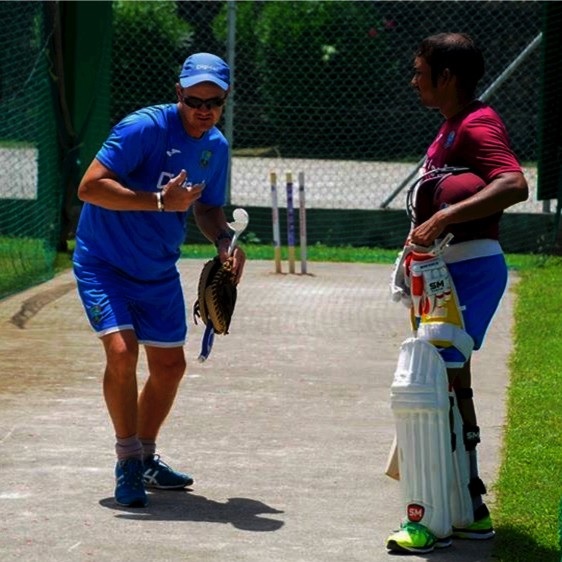
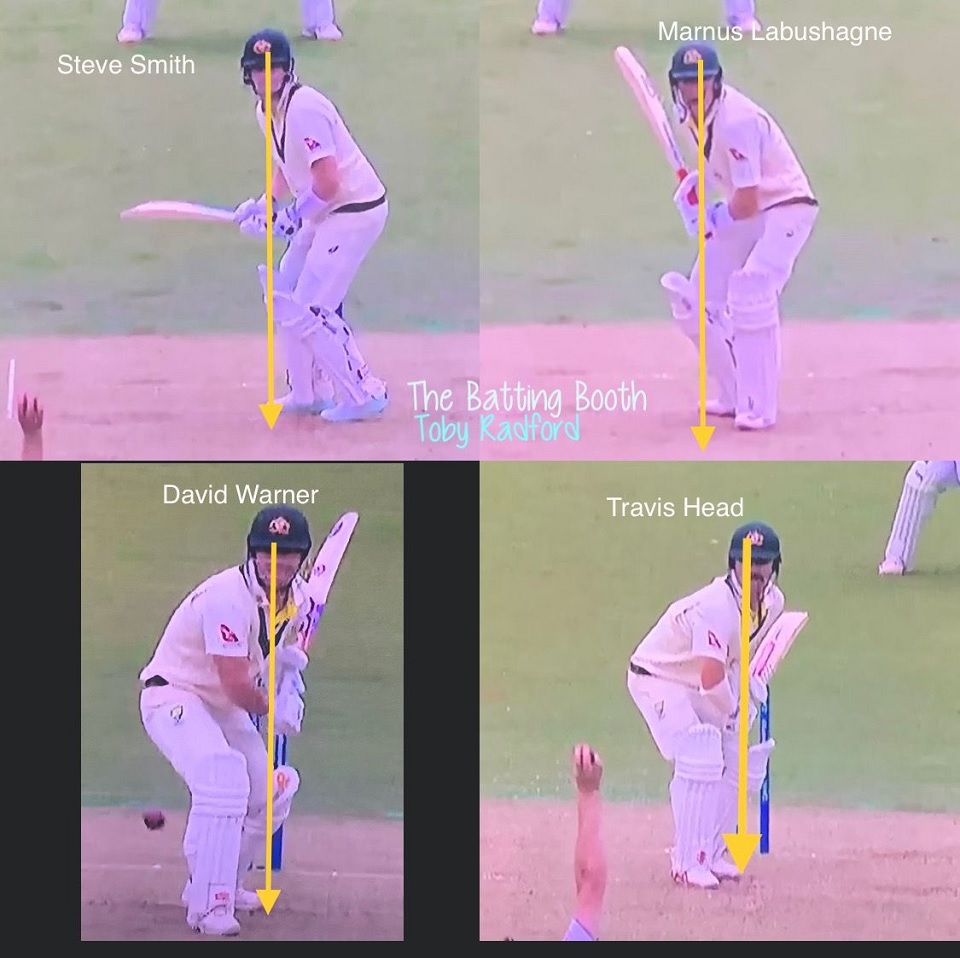
Australian batsmen at Ball Release…

Toby Radford
Cricket Coach
Greater Cardiff Area, United Kingdom
2 Likes
0 Followers
0 Followers

Australian batsmen at Ball Release…
Top Australian Cricket Batsman - Steve Smith, Marnus Labuschagne, David Warner and Travis Head - all shown here against England adopting similar well-balanced positions at ball release
At ball release they…
• Position their back foot and head close to the line of off stump (the business area)
• Keep their hands close to the body and under the head for optimum balance (creating an imaginary straight line from the head, through the hands to the feet)
• Have their head and body weight slightly forward to enable quick and easy movement forward and back 🏏 🇦🇺
#keepitsimple #alignment #balance
Read More
last year

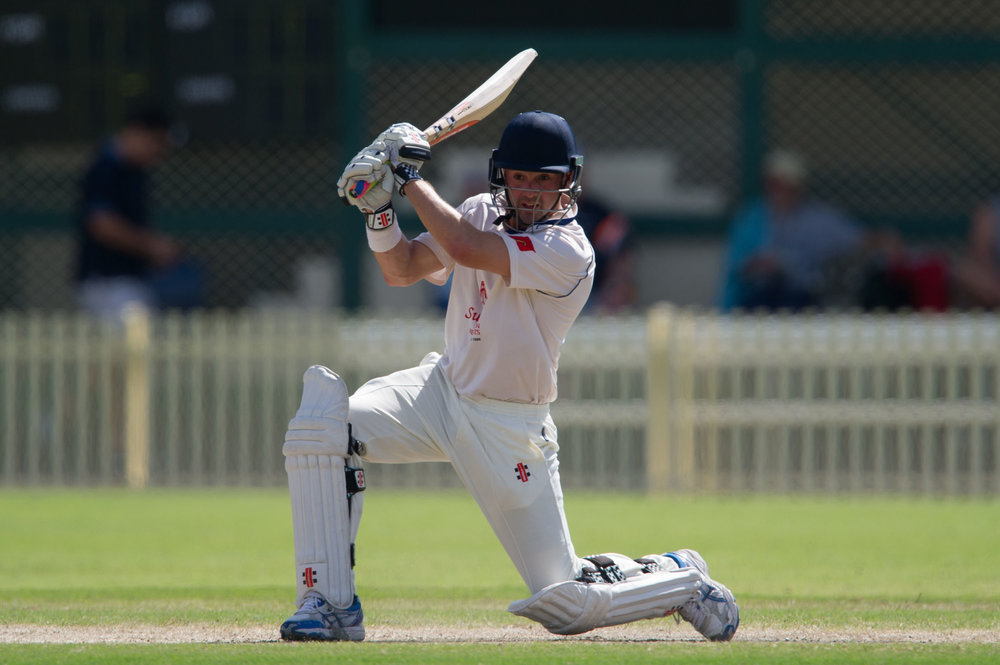
Ed Cowan made his first-class debut for Oxford Marylebone Cricket Club University against Middlesex in April 2003 and in a 15-year first-class career he played 143 games scoring 10,097 runs at an average of 41.81 including 25 centuries and 48 half-centuries. Highest score of 225.

Paul Ryan
Founder
Sydney, New South Wales, Australia
502 Likes
513 Followers
513 Followers

Ed Cowan made his first-class debut for Oxford Marylebone Cricket Club University against Middlesex in April 2003 and in a 15-year first-class career he played 143 games scoring 10,097 runs at an average of 41.81 including 25 centuries and 48 half-centuries. Highest score of 225.
He played for Australia, Australia A, British Universities, Gloucestershire, New South Wales, Nottinghamshire, Oxford MCCU, Sydney Sixers, Tasmania
Cowan is the proud owner of Australian test Cricketer No 427 and played 18 Tests. He scored 1,001 runs at an average of 31.58 with his highest score 136 being his only test century. He scored 6 half-centuries for Australia.
Over time one of Ed Cowan greatest strengths was how well his knew his game. It’s fair to say it served him very well as his successful career would indicate.
In June 2013 before the Ashes tour in England Ed took the time to provide an insight in a video with Australian Cricketers Association into his approach to batting and the mental battle batsmen face every time they take guard.
Great coaching and an insightful tool for cricketers at any level.
https://www.cricconnect.com/profile/32/paul-ryan/blog/1227/ed-cowan-shares-his-approach-to-batting
Read More
Partner Sponsors
last year


David Wilcox
Rockhampton, Queensland, Australia
2 Likes
0 Followers
0 Followers
When I was growing up, we were taught to play with the bat beside the pad with our head over the ball. My son who is 16 is being told by his coach to get the bat out in front of the pad – is this the modern way and the right advice/coaching?
Read More
last year

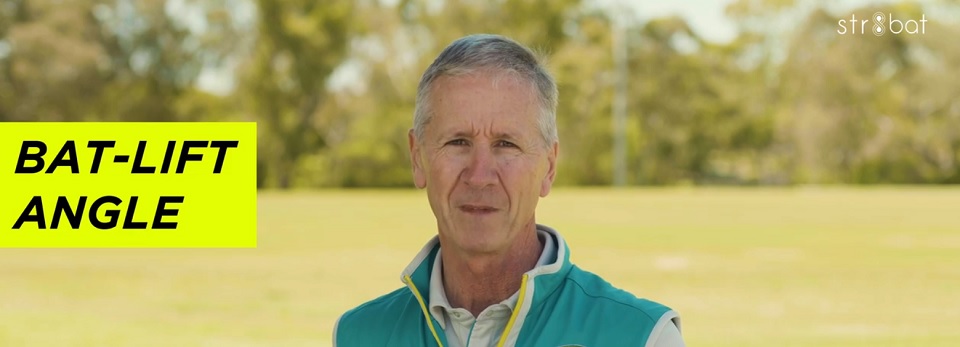
Bryan Harper is the Coach Development Specialist with Cricket Australia.

Cricket Australia Community
Melbourne, Australia
24 Likes
21 Followers
21 Followers

Bryan Harper is the Coach Development Specialist with Cricket Australia.
Str8bat seeks to revolutionise the way cricketers understand their batting strengths and weaknesses. The Str8bat bat sensor can be placed onto a cricket bat to capture motion and record data in real-time
In this masterclass the topic is Bat Lift Angle
https://www.cricconnect.com/profile/336/cricket-australia-community/blog/1071/str8bat-masterclass-with-bryan-harper-bat-lift-angle
Read More
last year

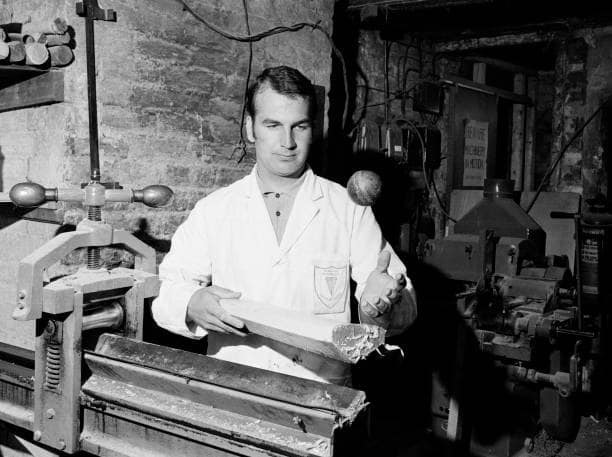
Duncan Fearnley - one of the world's most recognised names in cricket

Joe Maiorana
Sydney, Australia
40 Likes
2 Followers
2 Followers

Duncan Fearnley - one of the world's most recognised names in cricket
Charles Duncan Fearnley (born 12 April 1940), more commonly known as Duncan Fearnley, is a former first-class cricketer who, after retirement as a player, became a producer of cricket bats. Fearnley is also the great uncle of British Olympic gymnast Nile Wilson.
Fearnley Cricket traces its roots back to 1955 when a budding young cricketer, Duncan Fearnley began his trade as an apprentice with Senior Counties Bat Makers in Yorkshire.
Duncan, born in the cricket hotbed of Pudsey, Yorkshire was one of the youngest players to play Bradford League at 15 for Farsley.
His father was a woodwork teacher and his grandfather a cabinet maker, working with the grandfather of ex England Captain Raymond Illingworth
https://www.cricconnect.com/profile/325/joe-maiorana/blog/1058/duncan-fearnley-one-of-the-worlds-most-recognised-names-in-cricket
Read More
Partner Sponsors
last year


A fundamental skill for any batter is the art of concentration

Peter Procopis
Sunshine Coast, Queensland, Australia
27 Likes
5 Followers
5 Followers

A fundamental skill for any batter is the art of concentration
Faster improvement- why wait?
“Oh, mate, talk about frustrating… he threw it away again. Looked great for 80 minutes…then, all of a sudden, he ran at the leggie like a madman and tried to hit him into the next suburb. Missed it by a foot. Another big score gone begging. Bloody young guys…just don’t want it enough.”
I bet many of you have heard something like this from a Coach, official or senior player over the years- probably on multiple occasions. It’s the classic lament about the inability of promising youngsters to convert 20s and 30s into 70s and 100s. This age-old phenomenon is very frustrating not only for those watching young batsmen’s often chaotic downfalls, but also the youngsters themselves. They’re usually at a loss when asked what, if anything, triggered the brain explosion.
https://www.cricconnect.com/profile/946/peter-procopis/blog/1047/a-fundamental-skill-for-any-batter-is-the-art-of-concentration
Read More
last year


Cricket Bat making uncovered: The narrow bat trick

B3 Cricket
Cricket Coach
Nottingham, United Kingdom
13 Likes
6 Followers
6 Followers

Cricket Bat making uncovered: The narrow bat trick
Things to watch out for before you buy your next cricket bat.
Cricket bat makers use various techniques to make full profile, lightweight cricket bats.
In this video, B3’s Managing Director, Michael Blatherwick, explains how some manufacturers make narrow, skinny bats giving the impression of a bigger, fuller profile bat at a light weight below 2Ib 10oz.
A full width adult cricket bat should be 108mm wide (at the front and back of the bat). However, some manufacturers are making adult bats as narrow as 100mm!
Each millimetre shaved off the edge of a cricket bat saves approximately ¾ of an ounce in weight and makes the edges of the cricket bat look much bigger.
IS THIS ACCEPTABLE ... IT IS IF YOU KNOW ABOUT IT!
This practice is acceptable if you are aware of what you are buying and it’s your choice. Not so fine if you think you are purchasing a full width bat.
Other common practices to save weight include:
• Using super dry willow at less than the recommended moisture content. This makes cricket bats brittle and subject to more damage.
• Pressing lightly to leave the bat looking bigger.
• Making the shoulders and toes super skinny to save weight.
• Using light skinny handles without twine to save weight.
Watch the Video - https://youtu.be/w0zK2Xc37eE
Read More







